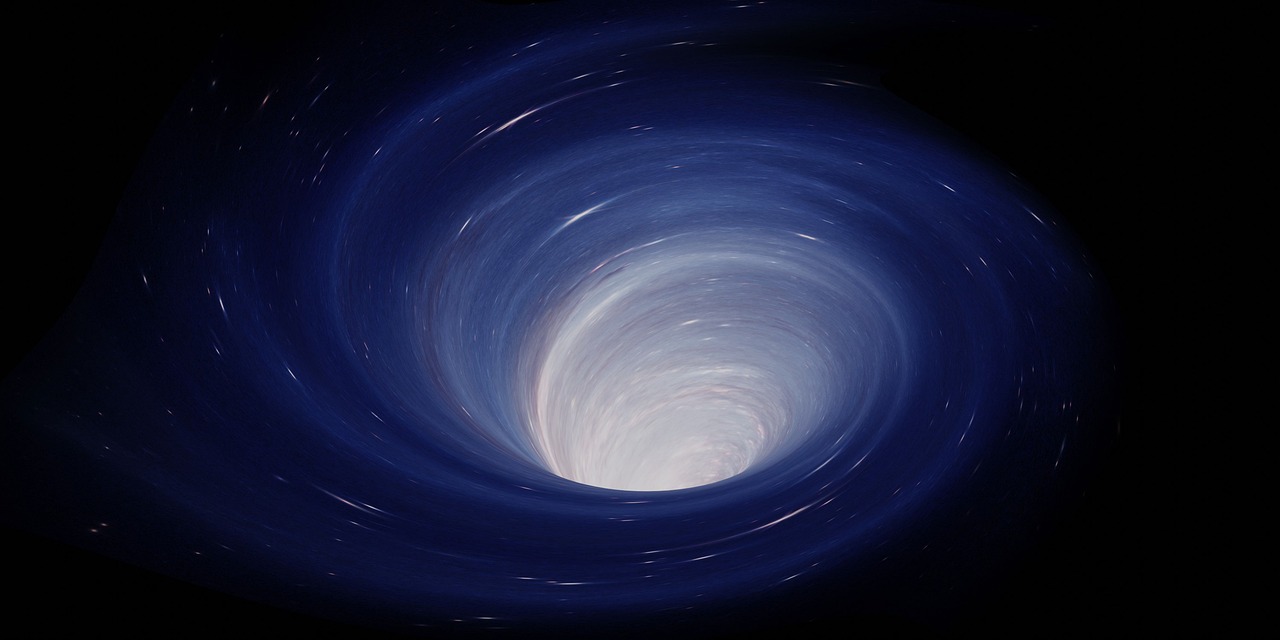Theories of Gravity - A Journey from Philosophy to Science
Gravity, the invisible force that keeps our feet planted on the ground and governs the motion of celestial bodies, has intrigued humanity for centuries. From ancient philosophers pondering the nature of the universe to modern scientists unraveling the complexities of spacetime, the journey of understanding gravity is as fascinating as it is intricate. This article explores the evolution of gravity theories, highlighting the pivotal figures and concepts that have shaped our comprehension of this fundamental force.
In the early days of civilization, gravity was a concept shrouded in mystery. Ancient cultures, such as the Greeks and Egyptians, had their own interpretations of why objects fell to the ground. Philosophers like Aristotle believed that heavier objects fell faster than lighter ones, a notion that persisted for centuries. However, these ideas were more philosophical than scientific, relying on observation rather than experimentation. It wasn't until the Renaissance that thinkers began to challenge these long-held beliefs, paving the way for a more scientific approach to understanding gravitational forces.
Enter Isaac Newton, a name synonymous with the laws of motion and gravity. In the late 17th century, Newton formulated his Law of Universal Gravitation, which stated that every mass attracts every other mass in the universe with a force that is directly proportional to the product of their masses and inversely proportional to the square of the distance between them. This groundbreaking formulation not only transformed our understanding of celestial mechanics but also laid the groundwork for future scientific exploration. Newton's laws provided a mathematical framework that explained everything from the fall of an apple to the orbits of planets.
The impact of Newton's discoveries was profound. His laws did not merely influence the realm of physics; they rippled through the fabric of philosophy, mathematics, and technology. The Enlightenment era, characterized by a surge of intellectual and scientific advancement, was significantly shaped by Newtonian principles. Thinkers began to see the universe as a vast machine, governed by laws that could be understood and predicted. This shift in perspective was revolutionary, encouraging a spirit of inquiry that would lead to countless advancements in various fields.
However, Newton's empirical approach to gravity clashed with the prevailing philosophical views of his time. Many philosophers were hesitant to abandon their long-held beliefs, leading to a fascinating tension between established thought and emerging scientific inquiry. For instance, while Newton's laws provided a clear mathematical description of gravity, they did not address the "why" behind the phenomenon. This gap left room for philosophical debates that questioned the nature of forces and the universe itself. The dialogue between science and philosophy during this period was crucial in shaping modern thought.
Newton's theories set the stage for future advancements in physics, influencing generations of scientists. His work laid the foundation for classical mechanics, which dominated the scientific landscape until the 20th century. Even today, Newtonian gravity is still used in many practical applications, from engineering to space exploration. The legacy of Newton's work is a testament to the power of scientific inquiry and its ability to challenge and refine our understanding of the universe.
Fast forward to the early 20th century, and we encounter the revolutionary ideas of Albert Einstein. His theory of General Relativity redefined gravity, shifting the paradigm from a force to the curvature of spacetime. According to Einstein, massive objects like planets and stars warp the fabric of spacetime around them, causing other objects to follow curved paths. This radical rethinking not only transformed our understanding of gravity but also opened the door to new questions about the nature of the universe. Einstein's work demonstrated that gravity is not merely a force but a fundamental aspect of the geometry of spacetime itself.
As we delve into the 21st century, the field of gravitational physics continues to evolve at a breathtaking pace. Recent advancements, such as the detection of gravitational waves and the study of black holes, showcase the ongoing evolution of gravitational theories. These discoveries have profound implications for our understanding of the universe, challenging existing theories and prompting new inquiries.
Gravitational waves, ripples in spacetime caused by massive accelerating objects, were first detected in 2015, confirming a key prediction of Einstein's General Relativity. Their detection has opened up a new window into the universe, allowing scientists to observe cosmic events that were previously invisible. The significance of gravitational waves extends beyond mere detection; they provide insights into the behavior of black holes, neutron stars, and the very fabric of spacetime itself.
Despite the advancements, challenges remain in the realm of gravitational physics. Questions surrounding dark matter and dark energy continue to puzzle scientists, as these enigmatic components make up a significant portion of the universe yet elude direct detection. The quest for a unified theory that reconciles gravity with quantum mechanics remains an ongoing challenge, illustrating the dynamic nature of scientific inquiry. As researchers push the boundaries of our understanding, the journey of exploring gravity is far from over.
- What is gravity? Gravity is a fundamental force that attracts two bodies towards each other, influencing their motion.
- Who first formulated the laws of gravity? Isaac Newton is credited with formulating the Law of Universal Gravitation in the late 17th century.
- What is Einstein's contribution to gravity? Albert Einstein's theory of General Relativity redefined gravity as the curvature of spacetime caused by mass.
- What are gravitational waves? Gravitational waves are ripples in spacetime caused by massive objects accelerating, first detected in 2015.
- What is dark matter? Dark matter is a form of matter that does not emit light or energy, making it invisible and detectable only through its gravitational effects.

Historical Perspectives on Gravity
The concept of gravity has fascinated humanity for centuries, leading to a rich tapestry of thought that spans from ancient philosophy to modern science. In the early days, gravity was not understood as a force but rather as a phenomenon that was intertwined with the very fabric of existence. Ancient civilizations, like the Greeks and Romans, pondered the nature of objects falling to the ground and the celestial bodies that traversed the night sky. Philosophers such as Aristotle believed that heavier objects fell faster than lighter ones, a notion that, while intuitive, was later disproven by empirical evidence.
As we journey through history, we encounter the brilliant minds of the Renaissance that began to challenge these long-held beliefs. Thinkers like Galileo Galilei, often dubbed the father of modern science, conducted experiments that revealed the truth about gravity. His famous thought experiment involving balls of different weights rolling down inclined planes demonstrated that, in the absence of air resistance, all objects fall at the same rate. This was a pivotal moment, as it laid the groundwork for a more scientific approach to understanding gravity.
Fast forward to the 17th century, where the stage was set for a monumental shift in gravitational theory. Isaac Newton stepped onto the scene with his groundbreaking work, "Philosophiæ Naturalis Principia Mathematica." Here, he introduced the Law of Universal Gravitation, which posited that every mass attracts every other mass in the universe. This was more than just a theory; it was a comprehensive framework that explained not only why apples fall from trees but also why planets orbit the sun. Newton's insights transformed gravity from a philosophical curiosity into a quantifiable force, fundamentally changing our understanding of motion and the cosmos.
To put this historical evolution into perspective, consider the following table that contrasts early philosophical views with Newtonian principles:
| Aspect | Philosophical Views | Newtonian Principles |
|---|---|---|
| Nature of Gravity | Interconnectedness of objects | Force of attraction between masses |
| Motion of Objects | Heavier objects fall faster | All objects fall at the same rate in a vacuum |
| Celestial Mechanics | Planets influenced by divine forces | Predictable orbits governed by mathematical laws |
This table illustrates the stark contrast between the abstract, philosophical musings of ancient thinkers and the empirical, mathematical approach of Newton. The transition from philosophical speculation to scientific inquiry marked a significant turning point in our understanding of gravity. It opened the door for future generations to build upon Newton's work, leading to advancements in physics that would further unravel the mysteries of the universe.
In summary, the historical perspectives on gravity reveal a fascinating journey from philosophical inquiry to scientific exploration. This evolution not only shaped our understanding of gravity but also laid the groundwork for future discoveries, including Einstein's revolutionary theories. The quest to comprehend gravity continues, as each new discovery builds upon the rich legacy of those who came before us, reminding us that the pursuit of knowledge is an ever-evolving journey.
- What is gravity? Gravity is a natural phenomenon by which all things with mass are brought toward one another, including planets, stars, galaxies, and even light.
- Who first discovered gravity? While gravity has been known since ancient times, Sir Isaac Newton is credited with formulating the first comprehensive theory of gravity in the 17th century.
- How did Galileo contribute to our understanding of gravity? Galileo conducted experiments that demonstrated that all objects fall at the same rate regardless of their mass, challenging earlier beliefs.
- What is the significance of Newton's Law of Universal Gravitation? Newton's law established a mathematical framework for understanding gravitational attraction, which revolutionized both physics and astronomy.
- How has our understanding of gravity evolved since Newton? Einstein's theory of general relativity redefined gravity as the curvature of spacetime rather than a force, leading to new insights into the nature of the universe.

Newton's Law of Universal Gravitation
Isaac Newton's formulation of the Law of Universal Gravitation in the late 17th century was nothing short of revolutionary. Imagine for a moment that you’re looking up at the night sky, filled with countless stars, and suddenly, a theory emerges that explains not just why an apple falls from a tree, but also why the moon orbits the Earth and why planets move in their celestial dance. Newton proposed that every particle of matter in the universe attracts every other particle with a force that is directly proportional to the product of their masses and inversely proportional to the square of the distance between them. This simple yet profound idea reshaped our understanding of the cosmos.
To put it simply, Newton's law can be encapsulated in the formula:
F G * (m1 * m2) / r²
Where:
- F is the force of gravitational attraction between two objects
- G is the gravitational constant
- m1 and m2 are the masses of the two objects
- r is the distance between the centers of the two objects
This equation not only provided a method to calculate gravitational force but also unified celestial and terrestrial mechanics under one grand theory. Before Newton, the motion of celestial bodies was often attributed to mystical forces or divine intervention. Newton, however, grounded his findings in observable phenomena, paving the way for a more scientific approach to understanding the universe.
The implications of Newton's Law were monumental. It didn't just explain how gravity worked; it transformed the entire landscape of science and philosophy. For instance, his work laid the groundwork for the Enlightenment—a period that emphasized reason, individualism, and skepticism of traditional doctrines. People began to view the universe as a vast machine governed by laws that could be understood and predicted. This shift in perspective was akin to moving from a world of superstition to one of reason, where knowledge could be acquired through observation and experimentation.
Interestingly, Newton's empirical approach often clashed with the philosophical views of his time. Many thinkers believed that the universe was a living entity, infused with purpose and intention. Newton, however, stripped away these notions, presenting a universe governed by mathematical laws. This created a tension between the new scientific paradigm and the established philosophical beliefs, as many struggled to reconcile the cold, mechanical universe with their more romantic notions of existence.
Newton's theories established a foundation that would influence generations of scientists. His laws of motion and gravitation became the bedrock of classical mechanics, allowing future thinkers like Laplace and Lagrange to further develop our understanding of motion and forces. The impact of his work can still be felt today, as even modern physics relies on Newtonian principles for many practical applications. From launching satellites to predicting the trajectories of spacecraft, Newton's legacy endures, a testament to the power of human inquiry and the quest for knowledge.

Impact of Newton's Discoveries
Isaac Newton's discoveries in the realm of gravity were nothing short of revolutionary. His formulation of the Law of Universal Gravitation not only changed the way we understand motion but also laid the groundwork for countless advancements across various disciplines. Imagine a world where the movement of celestial bodies and earthly objects was a complete mystery—Newton's insights illuminated the darkness, allowing humanity to grasp the very forces that govern our universe.
Newton's work had profound implications that rippled through science, philosophy, mathematics, and technology. His laws provided a framework that enabled scientists to predict the movements of planets, moons, and even artificial satellites with remarkable accuracy. For instance, the ability to calculate the trajectories of comets transformed our understanding of the solar system, making it possible to foresee celestial events that had previously been viewed as unpredictable omens. This predictive power was a game changer, pushing humanity toward a more scientific and rational worldview, particularly during the Enlightenment era.
Moreover, Newton's influence extended beyond just physics. His methods of inquiry and emphasis on empirical evidence challenged the philosophical norms of his time. Prior to Newton, many scholars relied heavily on philosophical reasoning and abstract concepts to explain natural phenomena. Newton's approach was a breath of fresh air, advocating for observation and experimentation as the cornerstones of scientific inquiry. This shift not only revolutionized the study of gravity but also paved the way for the scientific method as we know it today.
To further illustrate the impact of Newton's discoveries, consider the following key areas:
- Celestial Mechanics: Newton's laws allowed scientists to understand and predict the orbits of planets and moons, leading to the field of celestial mechanics.
- Engineering and Technology: His principles laid the foundation for advancements in engineering, enabling the design of structures and machines that could withstand gravitational forces.
- Philosophy and Thought: Newton's empirical methods encouraged a shift in philosophical thought, emphasizing reason and evidence over speculation.
- Mathematics: His work in calculus provided tools for solving complex problems involving motion, further enriching the field of mathematics.
In essence, Newton's discoveries did not merely enhance our understanding of gravity; they catalyzed a transformation in the way humanity perceives the universe. His legacy is evident in the way we approach scientific inquiry today, where questions are posed based on observation and experimentation rather than mere speculation. As we continue to explore the mysteries of the cosmos, we owe much of our understanding to the foundational work laid by Newton, whose impact resonates through the ages.
Q1: What is Newton's Law of Universal Gravitation?
A1: Newton's Law of Universal Gravitation states that every mass attracts every other mass in the universe with a force that is directly proportional to the product of their masses and inversely proportional to the square of the distance between their centers.
Q2: How did Newton's discoveries influence modern science?
A2: Newton's discoveries established a framework for classical mechanics, influencing various fields such as astronomy, engineering, and physics. His emphasis on empirical evidence and mathematical formulation laid the groundwork for the scientific method.
Q3: What were the philosophical implications of Newton's work?
A3: Newton's work challenged existing philosophical views by prioritizing observation and experimentation over abstract reasoning. This shift contributed to the rise of Enlightenment thinking, promoting a more scientific approach to understanding the natural world.

Newton vs. Philosophical Views
When we dive into the intellectual landscape of the 17th century, we find ourselves at a fascinating crossroads between empirical science and philosophical speculation. Isaac Newton, with his groundbreaking work on gravity, introduced a paradigm shift that challenged the established philosophical views of his time. Prior to Newton, many thinkers, including the likes of Aristotle and Descartes, held views that were steeped in metaphysical reasoning rather than observational evidence. Aristotle, for instance, posited that heavier objects fall faster than lighter ones, a notion that seemed intuitive but lacked rigorous testing.
Newton's approach was radically different. He introduced the concept of the Law of Universal Gravitation, which stated that every mass attracts every other mass in the universe with a force that is proportional to the product of their masses and inversely proportional to the square of the distance between them. This was not just a theoretical assertion; it was grounded in meticulous observation and mathematical formulation. Newton's laws provided a coherent framework that explained not just terrestrial phenomena but also celestial mechanics, unifying the heavens and the earth under a single set of principles.
To illustrate the contrast between Newton's empirical approach and the prevailing philosophical views, consider the following table that summarizes key differences:
| Aspect | Newton's Perspective | Philosophical Views |
|---|---|---|
| Basis of Understanding | Empirical evidence and mathematics | Metaphysical reasoning |
| Nature of Gravity | Force acting at a distance | Qualitative descriptions |
| Methodology | Experimental and observational | Speculative and deductive |
This tension between Newton's findings and philosophical thought is crucial to understanding the evolution of scientific inquiry. While philosophers were often content to theorize about the nature of reality, Newton demanded proof. His work prompted a shift in the way people thought about the universe: it was no longer sufficient to simply ponder; one had to observe, measure, and mathematically describe the natural world.
Moreover, this clash didn't just end with Newton's acceptance into the scientific community. It sparked debates that would resonate through the ages. Philosophers like Immanuel Kant later grappled with Newtonian mechanics, seeking to reconcile the empirical with the metaphysical. Kant famously suggested that space and time are not just arenas in which events occur but are themselves fundamental frameworks that shape our understanding of existence. This philosophical inquiry continued to evolve, leading to further advancements in physics and an even deeper understanding of gravity.
In essence, Newton's empirical approach not only transformed the study of gravity but also ignited a broader intellectual revolution. It laid the groundwork for the scientific method as we know it today, emphasizing observation, experimentation, and mathematical rigor. This shift was not merely academic; it fundamentally altered humanity's relationship with the universe, moving us from a realm of speculation to one of discovery and understanding.
- What was the main contribution of Newton to the field of gravity? Newton formulated the Law of Universal Gravitation, which mathematically describes the gravitational attraction between masses.
- How did philosophical views influence scientific thought during Newton's time? Philosophical views often relied on speculation rather than empirical evidence, which Newton challenged through his rigorous scientific methodology.
- Did Newton's work have any philosophical implications? Yes, Newton's empirical approach prompted philosophers to reconsider the nature of knowledge, reality, and the methods of inquiry.

Legacy of Newtonian Gravity
The legacy of Newtonian gravity is nothing short of monumental. Isaac Newton's formulation of the law of universal gravitation in the late 17th century not only revolutionized the field of physics but also laid a robust foundation for various scientific disciplines that would follow. Before Newton, the understanding of gravity was largely philosophical, steeped in abstract reasoning rather than empirical evidence. However, Newton's approach shifted the paradigm, making gravity a quantifiable force that could be described mathematically. This transition marked a pivotal moment in scientific history, as it bridged the gap between philosophy and science.
One of the most significant impacts of Newton's work was the establishment of classical mechanics. His three laws of motion, combined with the law of universal gravitation, provided a comprehensive framework for understanding the motion of objects both on Earth and in space. This framework not only explained terrestrial phenomena, such as falling apples, but also celestial mechanics, including the orbits of planets and moons. The elegance of his equations meant that they could be applied across a variety of contexts, making them invaluable tools for scientists and engineers alike.
Furthermore, Newton's theories had profound implications beyond the realm of physics. They influenced fields such as mathematics, where his work on calculus enabled further advancements in understanding motion and change. The philosophical implications were equally significant; Newton's empirical approach challenged the long-standing Aristotelian views and encouraged a new way of thinking about the natural world. This shift was instrumental in ushering in the Enlightenment era, a time characterized by reason, scientific inquiry, and skepticism of traditional beliefs.
To illustrate the far-reaching effects of Newtonian gravity, consider the following table that summarizes its contributions across various fields:
| Field | Contribution |
|---|---|
| Physics | Foundation for classical mechanics and understanding of gravitational forces. |
| Mathematics | Development of calculus, enabling complex problem-solving in motion. |
| Astronomy | Prediction of planetary orbits and celestial phenomena. |
| Philosophy | Shift from metaphysical explanations to empirical observations. |
However, Newton's legacy is not without its challenges. As science progressed, some of his ideas were found to be limited in scope. The advent of Einstein's theory of general relativity in the early 20th century introduced a new understanding of gravity as the curvature of spacetime, which expanded upon Newtonian concepts. Nevertheless, Newton's laws remain remarkably accurate for most everyday applications and continue to be taught as foundational principles in physics education.
In conclusion, the legacy of Newtonian gravity is a testament to the power of scientific inquiry. It not only transformed our understanding of the universe but also set the stage for future explorations in physics and beyond. Newton's work is a reminder that the quest for knowledge is an evolving journey, one that builds upon the achievements of those who came before. As we continue to explore the cosmos and unravel its mysteries, we do so on the shoulders of giants like Isaac Newton.
- What is Newton's law of universal gravitation? Newton's law states that every mass attracts every other mass in the universe with a force that is proportional to the product of their masses and inversely proportional to the square of the distance between their centers.
- How did Newton's work influence modern science? Newton's work laid the groundwork for classical mechanics, which is essential for understanding motion, forces, and energy, influencing various fields such as engineering, astronomy, and even economics.
- Is Newtonian gravity still relevant today? Yes, Newtonian gravity is still used for most everyday calculations and engineering applications, although it is complemented by Einstein's general relativity for high-precision scenarios and astronomical phenomena.

Einstein's Theory of General Relativity
When we think about gravity, we often picture it as a simple force pulling objects towards each other. However, Albert Einstein shattered this conventional view with his groundbreaking theory of general relativity. Introduced in 1915, this theory transformed our understanding of gravity from a mere force into a complex interaction between matter and the fabric of spacetime itself. Imagine spacetime as a vast, flexible sheet; when a massive object, like a planet or a star, sits on this sheet, it creates a dimple that affects the movement of other objects nearby. This revolutionary perspective not only changed the way we perceive gravity but also opened up new avenues for exploring the universe.
The essence of general relativity lies in the idea that mass and energy can warp spacetime, causing objects to follow curved paths rather than straight lines. This is akin to a marble rolling on a curved surface; instead of moving in a straight line, it follows the contours of the surface. Einstein's equations, which describe this relationship, are not just theoretical musings; they have been confirmed through numerous experiments and observations. For instance, the bending of light around massive objects, known as gravitational lensing, provides compelling evidence for the predictions made by general relativity.
One of the most astonishing predictions of general relativity is the existence of black holes. These cosmic phenomena occur when a massive star collapses under its own gravity, creating a region in spacetime where the gravitational pull is so strong that nothing, not even light, can escape. This idea, once thought to be purely speculative, has been supported by various astronomical observations, including the recent imaging of the black hole at the center of our galaxy. Such discoveries demonstrate the profound impact of Einstein's theory on our understanding of the universe.
Moreover, general relativity has far-reaching implications beyond just explaining gravity. It has influenced various fields, including cosmology, where it provides the framework for understanding the expansion of the universe. The famous Einstein field equations describe how matter and energy determine the curvature of spacetime, leading to insights about the universe's evolution over billions of years.
In summary, Einstein's theory of general relativity revolutionized our understanding of gravity, shifting it from a simple force to a complex interaction with spacetime. This paradigm shift not only enhanced our comprehension of the universe but also laid the groundwork for modern physics. As we continue to explore the cosmos, Einstein's legacy endures, reminding us that the universe is far more intricate than we could ever imagine.
- What is general relativity? General relativity is a theory proposed by Albert Einstein that describes gravity not as a force, but as a curvature of spacetime caused by mass and energy.
- How does general relativity differ from Newton's law of gravity? Newton's law describes gravity as a force acting at a distance, while general relativity explains it as the warping of spacetime around massive objects.
- What are black holes? Black holes are regions in spacetime where the gravitational pull is so intense that nothing can escape from them, formed from the collapse of massive stars.
- How has general relativity been tested? General relativity has been confirmed through various experiments, including the observation of gravitational waves and the bending of light around massive objects.

Modern Discoveries in Gravitational Physics
The field of gravitational physics has seen extraordinary advancements in recent years, reshaping our understanding of the universe in ways that were once thought to be the stuff of science fiction. From the detection of gravitational waves to the exploration of black holes, these discoveries are not just academic; they are monumental strides that reveal the intricate fabric of spacetime itself. Imagine the universe as a vast, dynamic ocean, where every ripple and wave tells a story about the forces at play. This is precisely what modern gravitational physics aims to uncover.
One of the most groundbreaking discoveries has been the detection of gravitational waves, first confirmed by the LIGO observatory in 2015. These waves are ripples in spacetime created by cataclysmic events such as the collision of black holes or neutron stars. The moment we detected these waves was akin to hearing the universe's heartbeat for the first time. It opened up a new frontier in astrophysics, allowing scientists to observe cosmic events that were previously invisible. The implications of this discovery are profound:
- New Observational Tools: Gravitational waves provide a new way to observe the universe, complementing traditional electromagnetic observations (like light and radio waves).
- Insights into Extreme Physics: They allow us to study phenomena in extreme environments, helping us understand the fundamental laws of physics under conditions that cannot be replicated on Earth.
- Testing General Relativity: Gravitational waves serve as a laboratory for testing Einstein's theory of general relativity in ways that were previously impossible.
Moreover, the study of black holes has taken center stage in modern gravitational research. These enigmatic entities, once mere theoretical constructs, are now being observed and studied in real time. The Event Horizon Telescope (EHT) collaboration made headlines in 2019 by capturing the first image of a black hole's event horizon in the galaxy M87. This was not just a scientific achievement; it was a visual testament to the power of modern technology and collaboration across the globe. The image itself is a cosmic portrait that challenges our understanding of gravity and the nature of space.
As we delve deeper into the cosmos, we also confront challenges that could reshape our theories of gravity. Questions surrounding dark matter and dark energy continue to perplex scientists. These mysterious components make up about 95% of the universe, yet their nature remains elusive. The pursuit of a unified theory that incorporates these elements alongside gravity is one of the most exciting and challenging endeavors in physics today. It's like trying to solve a cosmic puzzle with only a few pieces in hand, but every new discovery brings us closer to completing the picture.
In summary, modern discoveries in gravitational physics are not just about understanding gravity; they are about unlocking the secrets of the universe. Each finding propels us forward, urging us to ask more profound questions and seek deeper truths. As researchers continue to explore these frontiers, we stand on the brink of a new era in our understanding of the cosmos, where the lines between science and philosophy blur, and the mysteries of gravity beckon us to venture further into the unknown.
1. What are gravitational waves?
Gravitational waves are ripples in spacetime caused by massive accelerating objects, such as colliding black holes or neutron stars. They were first detected by LIGO in 2015, marking a significant milestone in astrophysics.
2. Why are black holes important in gravitational physics?
Black holes serve as laboratories for testing the laws of physics under extreme conditions. Their study helps us understand fundamental concepts like gravity, spacetime, and the behavior of matter in extreme environments.
3. What role does dark matter play in the universe?
Dark matter is a form of matter that does not emit light or energy, making it invisible. It is believed to make up about 27% of the universe and plays a crucial role in the formation of galaxies and the overall structure of the cosmos.
4. How does modern technology aid in gravitational research?
Technologies like LIGO and the Event Horizon Telescope allow scientists to observe cosmic phenomena that were previously undetectable. These advancements enable a deeper understanding of gravitational forces and their implications in the universe.

The Role of Gravitational Waves
Gravitational waves are like ripples in the fabric of spacetime, created by some of the universe's most violent and energetic processes. Imagine throwing a stone into a still pond; the ripples that spread out are analogous to these waves, which travel at the speed of light. Discovered only recently, these waves provide an entirely new way of observing the universe, allowing us to detect events that were previously invisible to our traditional telescopes.
The first direct detection of gravitational waves occurred on September 14, 2015, by the LIGO (Laser Interferometer Gravitational-Wave Observatory) collaboration. This monumental event confirmed a key prediction of Einstein's General Theory of Relativity. It marked a significant milestone in astrophysics, opening the door to a new era of gravitational wave astronomy. This discovery was a game-changer, as it enabled scientists to observe the merging of black holes and neutron stars, phenomena that release enormous amounts of energy and can be detected through these waves.
Gravitational waves allow us to explore the universe in ways we never thought possible. They carry information about their origins and about the nature of gravity itself. For instance, when two massive objects, like black holes, spiral towards each other and merge, they emit gravitational waves that can be detected billions of light-years away. This phenomenon not only helps us understand the life cycles of stars but also provides insights into the behavior of matter under extreme conditions.
To illustrate the significance of gravitational waves, consider the following table that summarizes some key events detected by LIGO:
| Event | Date Detected | Type of Event | Notable Findings |
|---|---|---|---|
| GW150914 | September 14, 2015 | Black Hole Merger | First direct detection of gravitational waves, confirming black hole mergers exist. |
| GW170817 | August 17, 2017 | Neutron Star Merger | First multi-messenger astronomy event, linking gravitational waves to gamma-ray bursts. |
| GW190521 | May 21, 2019 | Black Hole Merger | Detected a pair of black holes merging into a significantly larger black hole. |
As we continue to develop our technology and understanding, gravitational waves are expected to reveal even more secrets of the cosmos. Scientists are already planning future observatories, such as the space-based LISA (Laser Interferometer Space Antenna), which will be capable of detecting lower-frequency gravitational waves. This advancement will allow us to study events like supermassive black hole mergers and the early universe's dynamics.
In summary, gravitational waves are not just a scientific curiosity; they are a vital tool for understanding the universe. By studying these waves, we can piece together the puzzle of cosmic events, explore the fundamental nature of gravity, and even test the limits of our current theories. The journey of discovery is just beginning, and who knows what other cosmic secrets await us in the ripples of spacetime?
- What are gravitational waves? Gravitational waves are ripples in spacetime caused by the acceleration of massive objects, such as merging black holes or neutron stars.
- How were gravitational waves detected? They were detected using highly sensitive instruments like LIGO, which measure tiny changes in distance caused by passing gravitational waves.
- Why are gravitational waves important? They provide a new way to observe the universe, allowing scientists to study events that are otherwise invisible and gain insights into the fundamental nature of gravity.

Challenges to Current Theories
As we delve deeper into the universe, we encounter a myriad of challenges that test our current understanding of gravitational theories. While Newton and Einstein laid down the frameworks that have guided physicists for centuries, the quest for knowledge is far from over. One of the most pressing issues is the existence of dark matter and dark energy, which together constitute about 95% of the universe's total mass-energy content. Yet, these enigmatic components remain elusive, as they do not emit light or energy that we can detect directly. This raises the question: how can we base our gravitational theories on something we can't even see?
To illustrate the complexity of these challenges, let’s break down some of the key issues scientists are grappling with:
- Dark Matter: While we can infer its presence through gravitational effects on visible matter, such as galaxies and galaxy clusters, the exact nature of dark matter remains a mystery. Is it composed of weakly interacting massive particles (WIMPs), or is it something entirely different?
- Dark Energy: This mysterious force is believed to be responsible for the accelerated expansion of the universe. Its properties challenge our understanding of gravity itself. If gravity is attractive, how can something push galaxies apart?
- Quantum Mechanics vs. General Relativity: The reconciliation of these two pillars of physics is an ongoing struggle. General relativity describes gravity on a macroscopic scale, while quantum mechanics governs the subatomic realm. The quest for a unified theory that encompasses both realms remains one of the greatest challenges in physics.
Furthermore, the detection of gravitational waves has opened up new avenues for exploring these challenges. When LIGO made its groundbreaking detection in 2015, it confirmed predictions made by Einstein's general relativity. However, it also raised new questions about the nature of gravity and its interaction with spacetime. Can gravitational waves help us uncover the secrets of dark matter and dark energy? This is a tantalizing possibility that physicists are eager to explore.
In addition to these cosmic conundrums, scientists are also investigating the implications of modified gravity theories. These theories propose alterations to our current understanding of gravity in order to account for the observed phenomena that cannot be explained by general relativity alone. This includes concepts like MOND (Modified Newtonian Dynamics) and TeVeS (Tensor-Vector-Scalar gravity). However, these theories often face criticism and skepticism from the mainstream scientific community, as they challenge deeply entrenched ideas.
As we navigate through these challenges, it is essential to remember that science is a dynamic process. It thrives on questioning established norms and pushing the boundaries of what we know. The journey to unravel the mysteries of gravity and the universe may be fraught with difficulties, but it is also filled with excitement and discovery. Each challenge presents an opportunity for breakthroughs that could reshape our understanding of the cosmos.
Q: What is dark matter?
A: Dark matter is a form of matter that does not emit light or energy, making it invisible and detectable only through its gravitational effects on visible matter.
Q: Why is dark energy important?
A: Dark energy is believed to be responsible for the accelerated expansion of the universe, and understanding it could provide insights into the ultimate fate of the cosmos.
Q: How do gravitational waves affect our understanding of gravity?
A: Gravitational waves offer a new way to observe the universe, allowing scientists to test predictions of general relativity and explore phenomena that were previously beyond our reach.
Frequently Asked Questions
- What is gravity?
Gravity is a fundamental force of nature that attracts two bodies towards each other. It’s what keeps us grounded on Earth and governs the motion of celestial bodies in space. Think of it as the invisible glue that holds everything together in the universe!
- How did ancient civilizations understand gravity?
Ancient civilizations had various philosophical ideas about gravity. They often viewed it through a mystical lens, attributing it to the will of gods or natural balance. For instance, the Greeks speculated about the natural tendencies of objects, laying a philosophical foundation that would eventually evolve into scientific inquiry.
- What is Newton's Law of Universal Gravitation?
Isaac Newton formulated the Law of Universal Gravitation in the 17th century, stating that every mass attracts every other mass in the universe. This groundbreaking idea not only explained why apples fall from trees but also how planets orbit the sun, revolutionizing our understanding of both terrestrial and celestial mechanics.
- How did Einstein's theory change our understanding of gravity?
Einstein’s Theory of General Relativity redefined gravity as the curvature of spacetime caused by mass, rather than just a force. This shift in perspective transformed how we understand the universe, showing that massive objects like stars and planets warp the fabric of spacetime around them.
- What are gravitational waves?
Gravitational waves are ripples in spacetime created by massive accelerating objects, such as merging black holes or neutron stars. Their detection has opened up a new way of observing the universe, allowing scientists to study cosmic events that were previously invisible.
- What challenges do current theories of gravity face?
Current gravitational theories are challenged by phenomena like dark matter and dark energy, which don't fit neatly into existing frameworks. Scientists are actively researching these areas, seeking a unified theory that can elegantly explain all gravitational interactions.



















